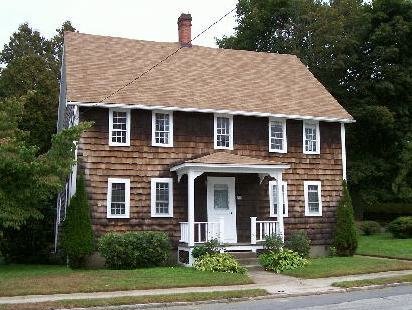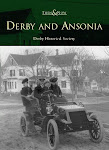This is my garden armillary sundial, which is quite nice. You'll notice, though, that it's gnomon is missing both it's arrow head and tail. About two seasons ago, this sundial took an unfortunate fall from a garden wall, breaking both pieces off. Fixing it is no big deal -- just a matter of cutting two appropriately sized pieces of 1/4" brass rod, threading each end, and screwing it all back together. But it's one of those bothersome small tasks that just doesn't manage to get scheduled. The sundial is going to be the centerpiece of my forthcoming colonial herb garden at the house, so maybe that will provide me enough incentive to finally fix it. Maybe.

Since my location is 41 degrees N. latitude, I used a protractor to angle the gnomon at precisely 41 degrees. The gnomon needs to point true North and align with the earth's axis for the sundial to work properly. Not too imprecise a measurement, eh?

The future site of the hypothetical colonial herb garden. This part of the yard gets nearly constant sun through out the day. The garden will be situated on the opposite side of the path, just this side of the decorative grass, and replacing the patch of crab grass in the foreground. It will be bordered by 4 x 4 cedar posts, and feature two small foot paths through the center, emanating from the sundial:

Close-up of the decorative maiden grass in the side yard, and all the grape hyacinth and lilies that appear in the early spring. This photo was taken a good number of weeks ago. The hyacinth and lilies are actually gone now, and have been replaced by these white perennials that I cannot readily identify. It's an interesting dance that takes place here every springtime. Yet another (small) project of mine is to complete the encirclement of the grassy patch with a large assortment of perennials, so there's always something interesting going on through out the entire spring, summer, and early fall:

The early springtime ritual of planting annuals in hanging baskets is shown in the next few photos. This year, we planted red and yellow marigolds, yellow pansies, and some dark purple flower whose name eludes me at the current moment. I was going for somewhat contrasting colors this year, just for kicks. (Oh yeah, there's a couple of herbs there, too; rosemary and basil):

Hanging baskets in various stages of completion. The mums I had planted last fall survived the winter and are growing like crazing now (all green -- no flower buds for a while yet). So I will have them to re-display in the fall time:

A completed large basket:

Two of the larger baskets deployed on the entry porch. Since this photo was taken, I've also installed two candle lanterns on each of the front posts supporting the roof:

Newly planted herbs and tomatoes, respectively, in wooden containers on, or in the vicinity of, my front porch. These plants are patiently waiting for me to finish digging the potagers and herb garden, of course, and are demonstrating their enthusiasm by growing bigger, and bigger, and bigger, and...


This photo shows stone remnants of an ancient terraced garden that is mostly buried by earth and covered by various growth out behind the house. There are a number of interesting, random plants still thriving out there, including some roses and rasberry bushes, not to mention lots of poison ivy! One of my big summer projects is to resurrect this garden, but there's just so little time. We'll see how far I get. If I can get even the basic garden unearthed and well-defined, I would be satisfied with it for this season:

This buckboard table graces the other end of my mudroom. Can you believe that some one in my neighborhood had left this out curb-side to be taken away with the trash? I was driving by one rainy night in my pickup truck and noticed it's outline in the street light (I know, it sounds like a sad story of hyperbolic abandonment, doesn't it? But it's true!) I stopped, threw it in the back of my truck, and it's been a fine friend and fellow traveler ever since:

Lavendar and chives (container herbs) are flowering right now (I took this photo just yesterday). They are likewise awaiting their move to the big hypothetical herb garden in the side yard, with armillary sundial, cedar borders, and well-defined paths. We'll see...


And what posting of outdoor activities would be complete without some mention of the various animal friends who like to drop by on occasion and try to figure out what manner of weirdness I am currently occupying my time with?
Here, one of the neighborhood cats came visiting out behind the house, and hung out for a while by the old overturned wheel barrow and deteriorating saw-buck:

And here, one of those ubiquitous crows was gingerly walking down the drive way, inspecting things (perhaps keeping an eye out for the cat). I was actually amazed how far he trotted along on foot before finally flying up into the trees. I took this photo from the window of my study, through the old glass -- hence the noticeable blur just in front of the crow. The old stone wall in the background is an ancient remnant of the cow farm that once existed here, up until about fifty years ago.

There are many interesting trees in bloom right now, including dogwood, lilac, red maple, and various pines, plus many other annuals and flowering shrubs. Almost exactly one year ago, I created a posting with photos of many of these blooms. If you're interested in viewing further, you can see that posting by clicking here.
















